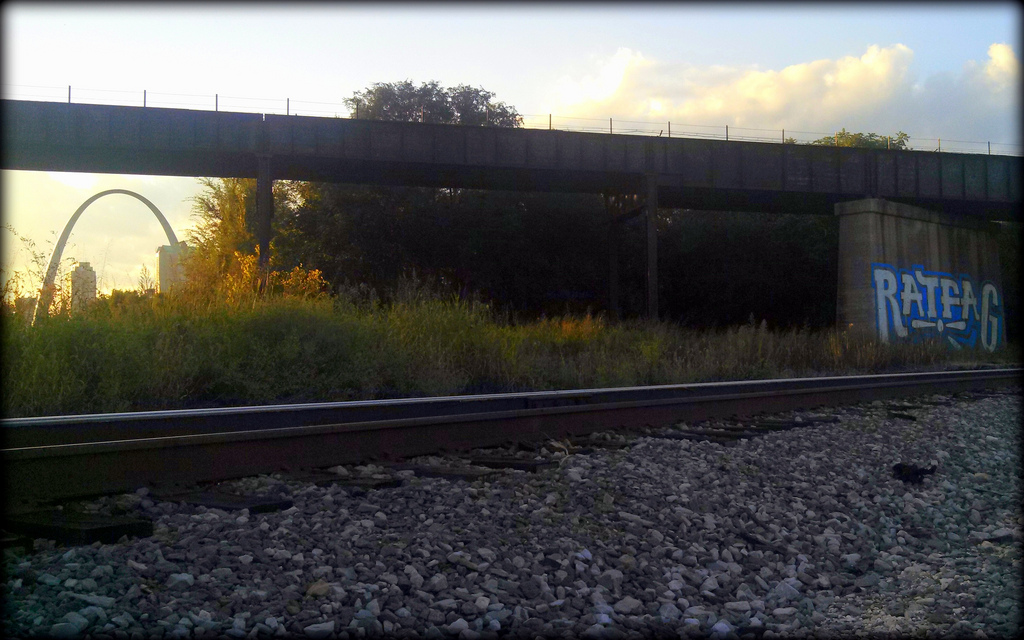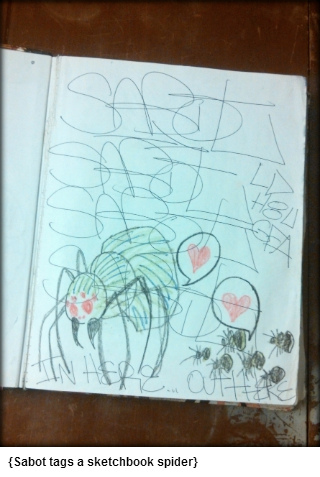
Despite growing up around gardeners, it took until my late-30s for the activity to really hang around. When it did, I opted for the all-out approach. In went raised beds, initially tended to by a local green grocer. Out came the beds, the green grocer too time-consumed by retail and cafe growth to commit to tiny-scale farming. In went the beds again, now inspired by Novella Carpenter’s “Farm City.” This time they stuck, with a chicken yard added for good measure. These days, the area’s pretty productive, to the point that constantly on the lookout for people who enjoy banana peppers.
Once you find a hobby, of course, you begin to look around for kindred spirits; at some point, you can’t help but notice them. Relating to gardeners, I’ve talked to a few, though I’m just as interested in not talking, preferring to peek into backyards and converted LRA lots. As I gardened more, I noticed that lots of other people were doing the same, the urban environment around South City dotted by dozens of small gardens. As someone who drives and bikes through alleyways with regularity, the trend’s even more obvious, more pronounced.
On the way to one side job, I pass two, big, backyard mega-gardens, at least every few days. There’s a smaller version up my street, tended to by an ancient Vietnamese man, who raises an annual batch of towering okra plants. As I’ve spent more time socially along Cherokee Street, I see pot gardens everywhere, some of them sickly, some bountiful. As mild, healthy obsessions go, it’s not so bad, staring into yards and stopping off at Bayer’s Garden “just to look around.” Things could be worse.
For example, it could be impossible for you to turn off the graffiti radar.
It’s gotten to that point for me, the inability to look around the City without noticing a new Dozer tag on Gravois, on five, street-blocking Schoemehl pots near my home. I always thought that someone would add a name there, and, bang!, this week it came. That kind of thing seemed to happen more than once this week.
Interviews for this series have been getting scarce, damned near desert-like. With a couple more entries to go, I’m opting for a week of not talking to other folks, not even worrying about talking to ‘em. Instead, I’ve kinda let the story come to me.
 BOOK IT
BOOK IT
For a full 10 years, I’ve been distributing a sketchbook to friends, students, the kids I coached in soccer, folks I don’t even know. It’s sat for weeks at the old City Art Supply on Cherokee and was kept by other individuals for up to months at a stretch. Sometimes, I’ve brought the book to various jobs, asking folks to sketch something, anything, in the pages, in the hopes of someday finishing this movable project.
To date, the book’s got a host of high-quality names attached. I won’t list them all; hey, I don’t even know them all. But there’s immense talent represented, including a lot of “name” St. Louis artists, in all disciplines. There’s an equally-immense range of work shown, from of-the-moment pencil and ink drawings, to elaborate, hours-in-the-making pieces. It’s been fun to hang onto, to let go of, to allow to exist in a strange space of personal ownership and floating freedom.
Recently, the crew at BANK projects threw an event, bringing artists from Kansas City to St. Louis. The event was a night-long affair and I got the book down to BANK projects later in the night, activities already well-under-way. The book was passed around a bit and then stayed at BANK, where the crew there added a few touches in the next few weeks. A few days back, I ran into one of them, gathering up the book. As I sat down to search for new work, I almost flipped.
Inside, on one of the first pages, Sabot had done a partial cover-up of a page featuring a large ant. The page now offered his name, several times. Along with the messages “LD H8S U,” “GFA” and “In Here… Out There.” I’m not sure if Sabot knew if was my book, or if kismet brought him and the book together. Recently, some of the same messages were placed on the front of the new Luminary just a few blocks away, and Sabot’s name is spied all over town, in various forms.
But seeing it in that context, “my” context… absolutely occurring randomly and covering up another piece… let’s just say that the act stirred at least an hour of good, deep conversation about graffiti. It was a wild, left-field addition to a book that I can honestly say is one of my most-prized possessions. Now, another, odd story has been added.
A’s MARK THE SPOT
Again, along Cherokee, where most of this series seems set. Again, we’re only time-traveling part of a week.
This time, I’m in my vehicle, about a block south of the main drag. On a side street, a tag on the front of a building calls out: “Class War,” it reads. A day, or so, later, I notice the same message on a building on Cherokee, itself, just a few doors east of Gravois. This is the same messenger, too, based on the sloppy paint control and simple slogan. On this wall, the words have gone over a handsome glazed brick. In both cases, Class War’s been written on empty buildings; even with the much-lauded rebirth of that block, there are plenty of empty units mixed into Cherokee’s housing stock. And here were two selected for another type of work.
 My initial thought was self-serving, in a way. There have been times in this series when folks have suggested, based on anecdote or just hunch, that media attention will always bring about a little action on the graffiti front. And just two weeks, back, we featured some thoughts on political graffiti and agitprop, i.e. messages based in public spaces through signs, stickers or other, non-graf means. And here were some new entries in the old “anarchist tag” category. Two weeks later.
My initial thought was self-serving, in a way. There have been times in this series when folks have suggested, based on anecdote or just hunch, that media attention will always bring about a little action on the graffiti front. And just two weeks, back, we featured some thoughts on political graffiti and agitprop, i.e. messages based in public spaces through signs, stickers or other, non-graf means. And here were some new entries in the old “anarchist tag” category. Two weeks later.
Likely, the two factors don’t match up. The person who quickly tagged these spots wasn’t responding to a piece found on nextSTL.com, one that suggested that political graffiti was in short supply in this town, at least of late. Probably, it was a random thing.
I’d like to find out, to be sure. But I don’t know who to ask. Do you?
ON THE RIGHT TRACKS
It’s a post-school kinda afternoon and the day’s not gone quite to expectation. Heading towards Downtown on 55/70, I make a decision that I’ve done dozens of times before, jumping across the PSB and hopping off in East St. Louis. Lately, I’ve noticed a few, huge pieces of graffiti go live underneath the spaghetti of roadways that dominate this car-saturated corner of our region.
Dipping past a bank, a gas station, and the funny, little Fountain of Youth Park, I head underneath the bridges, all but sure that I’ll be alone for the duration of my stay. After a minute’s drive, I see a piece that I’ve known, for Ilson and another for Ratfag. New to me is a piece by Crime (with an added “Yuppies Don’t Float”) and one that says “Free Marte Mason,” in bold, blocked letters. I hop out, armed only with a phone’s camera and the feeling that the afternoon’s light is fast leaving me. And sure enough, it’s on the way down as I grab the last, average captures of the scene down there, big streaks of light cutting against the walls, as dozens of cars pass over me every minute.
I’m on my way out, wondering if I should nip one at Deneese’s Place in downtown East Saint when I see something off to the left. It’s a massive Ilson piece. And, as these things go, there’s a Ratfag just beyond. To access these for even an attempt at a decent picture, I ditch my vehicle at maybe the only business standing in this zone, walking along a railroad track for a good 60-seconds before getting to the spot. There, I notice that the Arch is visible underneath a bridge. When I line things up just so, I can grab an image with all the elements: a monument known to millions, a graf writer known (by name) to thousands, a part of town that’s visited by few.
It was an enlivening moment, somehow. One of the three this week.
And next week: that long-promised piece on murals.

